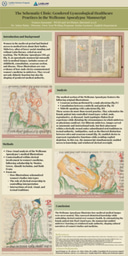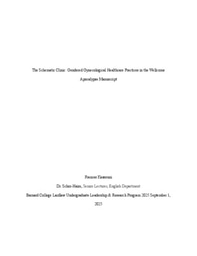Summer Research Abstract
Women in the medieval period seldom had access to medical texts about their own bodies. Current scholarship and evidence suggests that midwives, often of a lower class and without access to the education that would allow for a reading or working knowledge of Latin, were sometimes taught by male physicians and clerics who owned medical texts using illustrations that, in rare occasions, addressed gynecology and obstetrical medicine. Of particular interest, and unique in its heavy illumination, is the Wellcome Apocalypse Manuscript (MS.49), which includes most of the standard models of illustrating women's medicine, including the Muscian fetus-in-utero images, the schematized uterus and fetus found in MS Ashmole 399, the ‘disease women,’ and the inclusion of scenes of a presumed cesarean section and a conversation between a female patient and a midwife. While much work has been done to discuss the provenance and development of this manuscript, little work has been done to understand and analyze the implication of these illustrations in the construction of gendered dynamics in women's medicine. Through visual analysis, I argue that the illustrations operate as a key site in the creation of gendered gynecological health care and masculinized women’s medicine. In understanding how illustrations played a role in gender dynamics between male physicians and female midwives, I argue that these images functioned as a site of male authority in cultural representations of women’s bodies, schematizing female patients into controlled visual types that delineated the circumstances under which midwives and physicians could engage in women’s medicine.


Please sign in
If you are a registered user on Laidlaw Scholars Network, please sign in